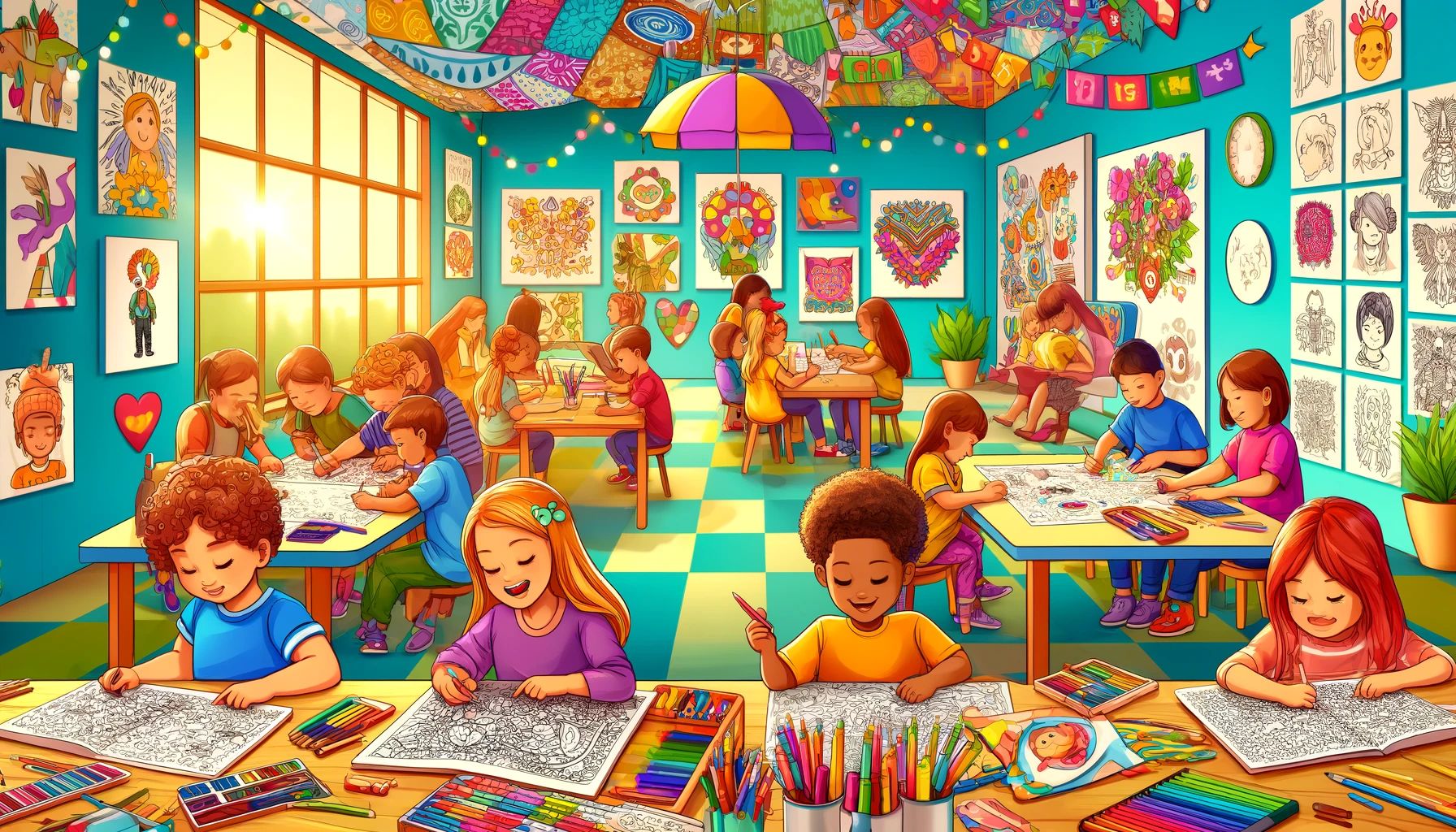Coloring is not just an artistic activity for children to pass the time; it’s a dynamic educational tool that can help introduce and solidify new concepts ranging from the alphabet and numbers to basic scientific ideas.
“A Palette of Curiosity: Using Coloring to Teach New Concepts” explores how coloring can engage children’s curiosity and enhance their learning. This article will provide strategies for parents and educators to craft fun and educational coloring sessions.
The Educational Power of Coloring Pages
Coloring pages are a staple in young learners’ educational toolkits, particularly in preschool and early elementary settings. These pages offer more than the opportunity to practice fine motor skills—they can also be a canvas for learning basic academic concepts.
Learning the Alphabet and Numbers: Coloring pages can be designed with letters and numbers styled creatively and in various colors. For instance, an ‘A’ might be adorned with tiny apples or an ‘8’ wrapped in an octopus’s arms, connecting the letter or number with various objects.
– Progressive Complexity: Start with simple pages for young children, such as big, bold letters and numbers that are easy to color within. As children advance, they introduce more complex scenes requiring finer coloring skills, challenging them and keeping their interest piqued.
Incorporating Fun Facts into Coloring Time
Integrating fun facts into coloring sessions can transform them from mere art activities into interactive learning experiences. Here’s how to enrich coloring time with educational content:
– Themed Coloring Pages: Use themes such as ocean life, space, or dinosaurs to create rich, informative coloring pages. For example, children could learn fun facts about each planet while coloring a page featuring the solar system.
– Interactive Learning: Encourage children to talk about what they are coloring. For instance, ask questions like “What do you know about this dinosaur?” as they color it, prompting them to think and express their thoughts.
Using Coloring Quizzes to Reinforce Learning
Coloring quizzes can be excellent tools for reinforcing the concepts learned during coloring activities. These quizzes can be fun and educational, providing immediate feedback and a sense of accomplishment.
– Quizzes Related to the Coloring Page: After coloring a page featuring different types of animals, a quiz could ask questions like “Which animal on your page lives in the jungle?” This reinforces learning and helps children associate colored images with facts.
– Rewarding Correct Answers: Incorporate a system where correct answers lead to more coloring opportunities or small rewards, which can motivate further learning and engagement.
Benefits of Learning Through Coloring
Using coloring as an educational tool offers multiple benefits:
– Enhances Retention: Children are likely to remember concepts better when they are learned in a fun and engaging way. Coloring solidifies these memories by associating them with active participation.
– Sparks Interest: By making learning visual and interactive, coloring can capture young learners’ interest more effectively than passive teaching methods.
Adaptable to Various Learning Styles: Coloring is a versatile activity that can suit visual, auditory, or kinesthetic learners, making it an inclusive educational tool.
Coloring is a powerful method for teaching and reinforcing new concepts among young learners. “A Palette of Curiosity” highlights how to use coloring effectively to teach foundational academic skills and illustrates how to make the learning process fun, interactive, and memorable.
By integrating fun facts, creative quizzes, and thematic coloring pages into educational routines, parents and educators can significantly enhance children’s learning experiences, paving the way for a lifetime of curiosity and knowledge. At Easy Smart Learning Education, we believe this is one of the best ways to enhance motivation.
